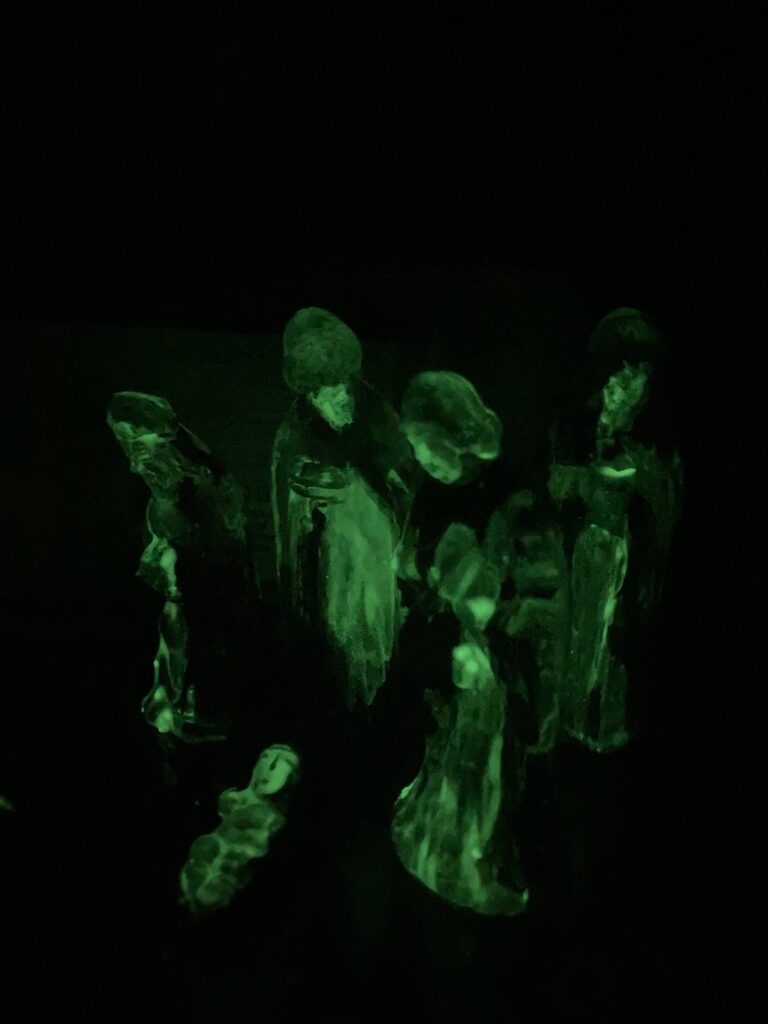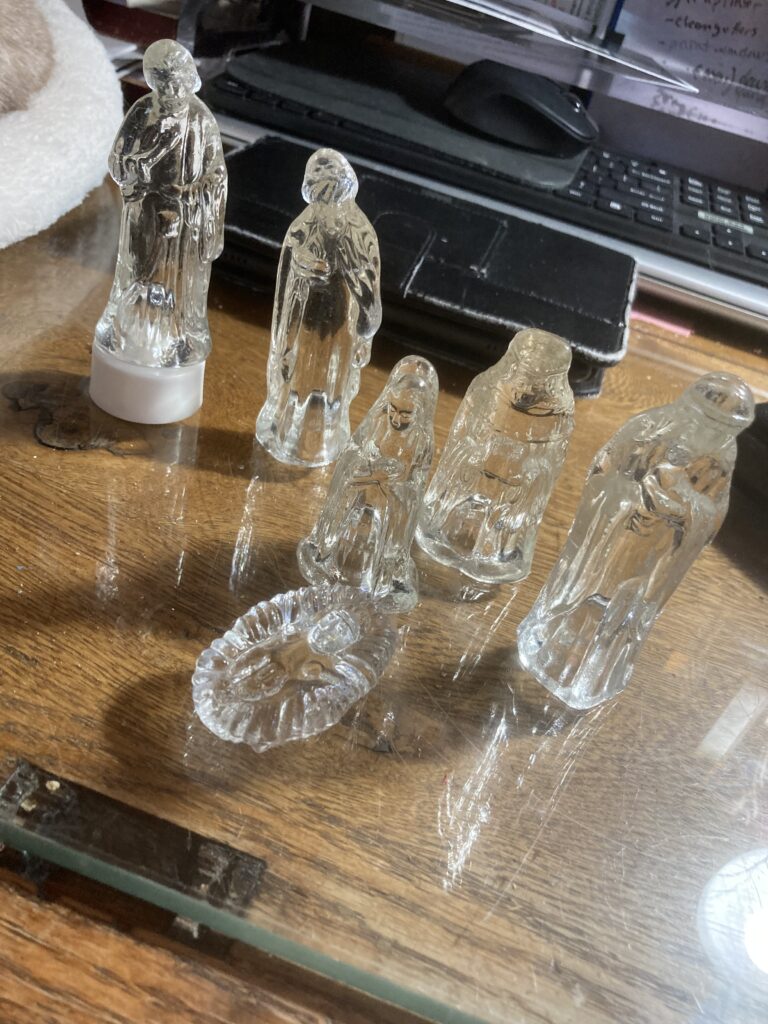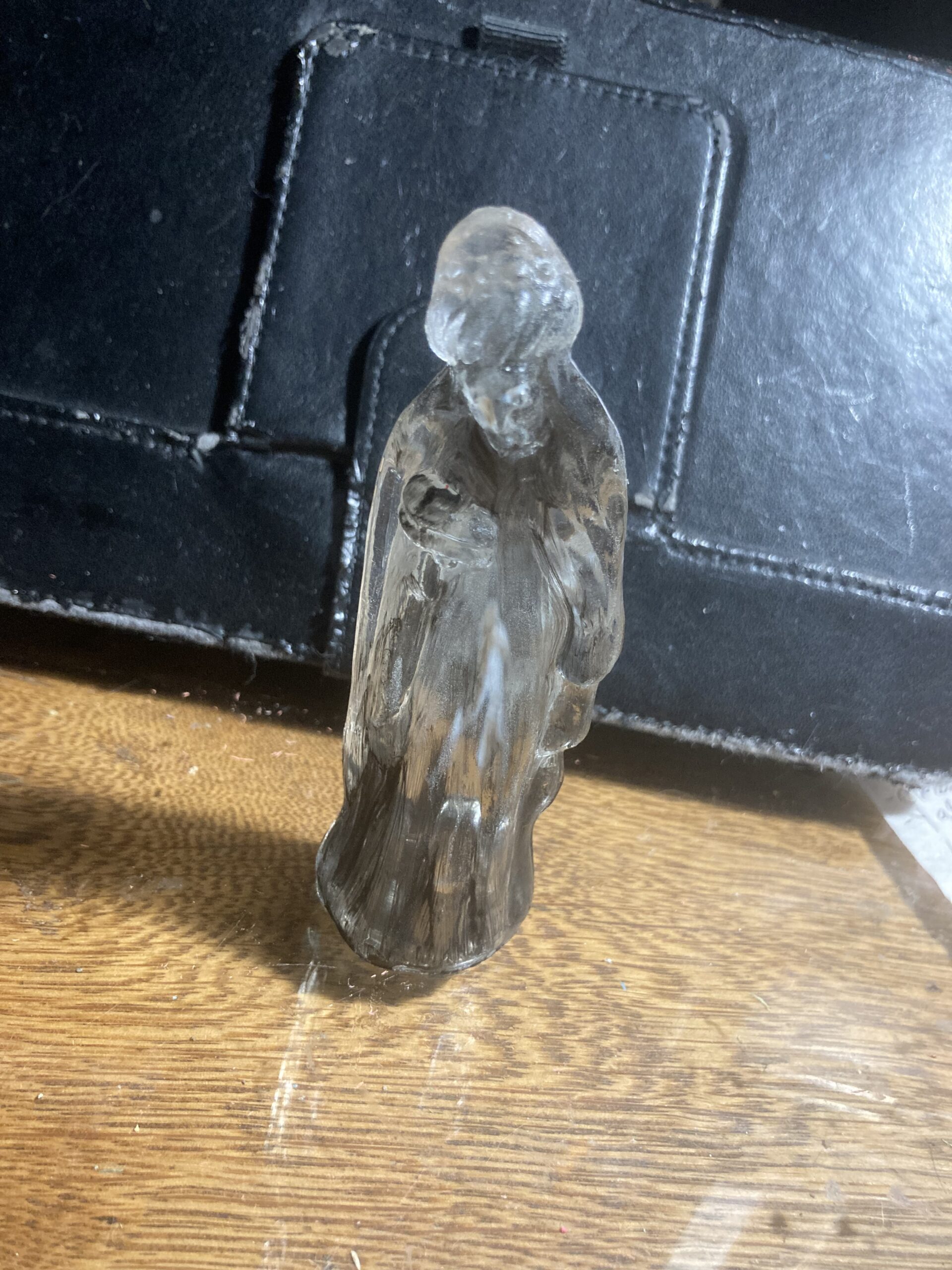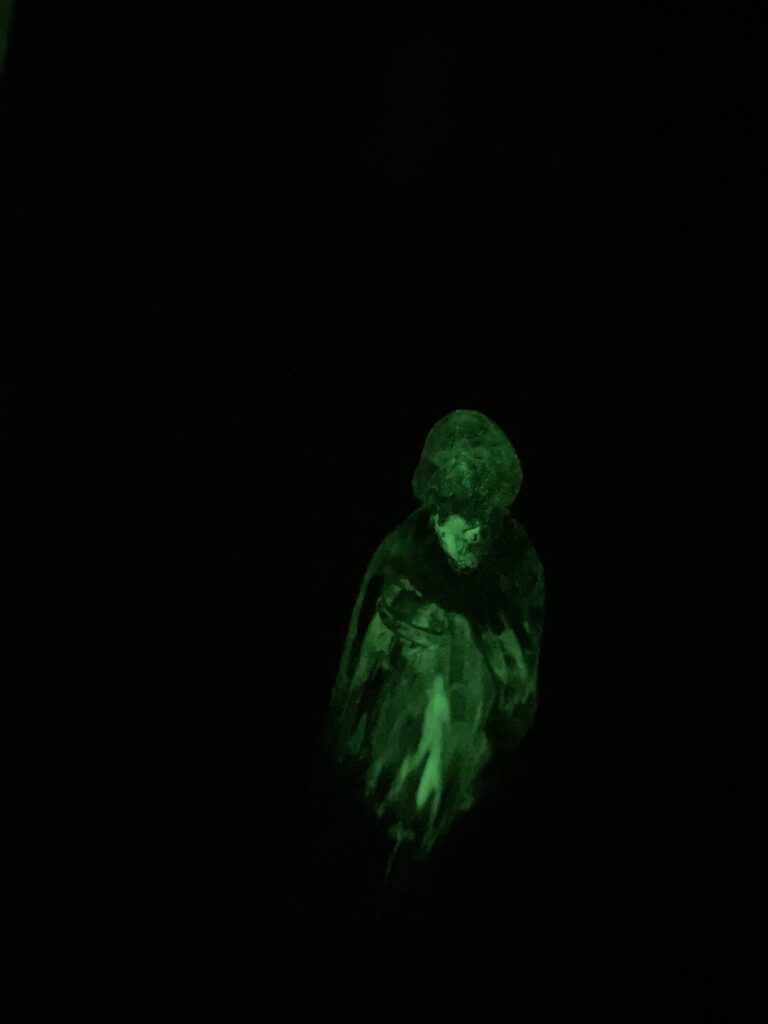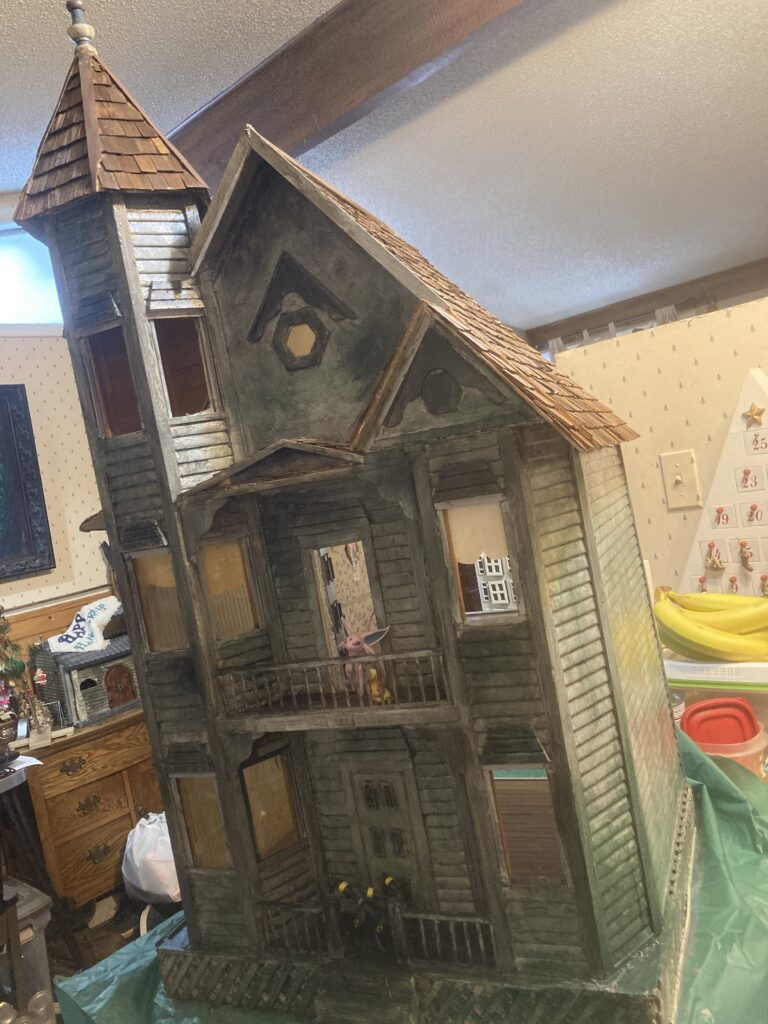
Recently, I was at the local Goodwill store with my 10 year old daughter, and we came upon a very dilapidated San Franciscan dollhouse for only $15. I wasn’t very interested in it, myself, because I already have a very nice Victorian mansion (the Beacon Hill, see other posts), and the San Franciscan didn’t really interest me much. My daughter, however, fell in love. She told me she would trade my Bayberry Cottage house back to me if I got her this one. I decided to go for it.

My daughter is a big fan of my haunted Beacon Hill dollhouse, and plays in it often. She has been bugging me to repaint her San Franciscan to look haunted like my Beacon Hill. I LOVED painting my Beacon Hill to look abandoned, and relished the opportunity to try it again on a different house.
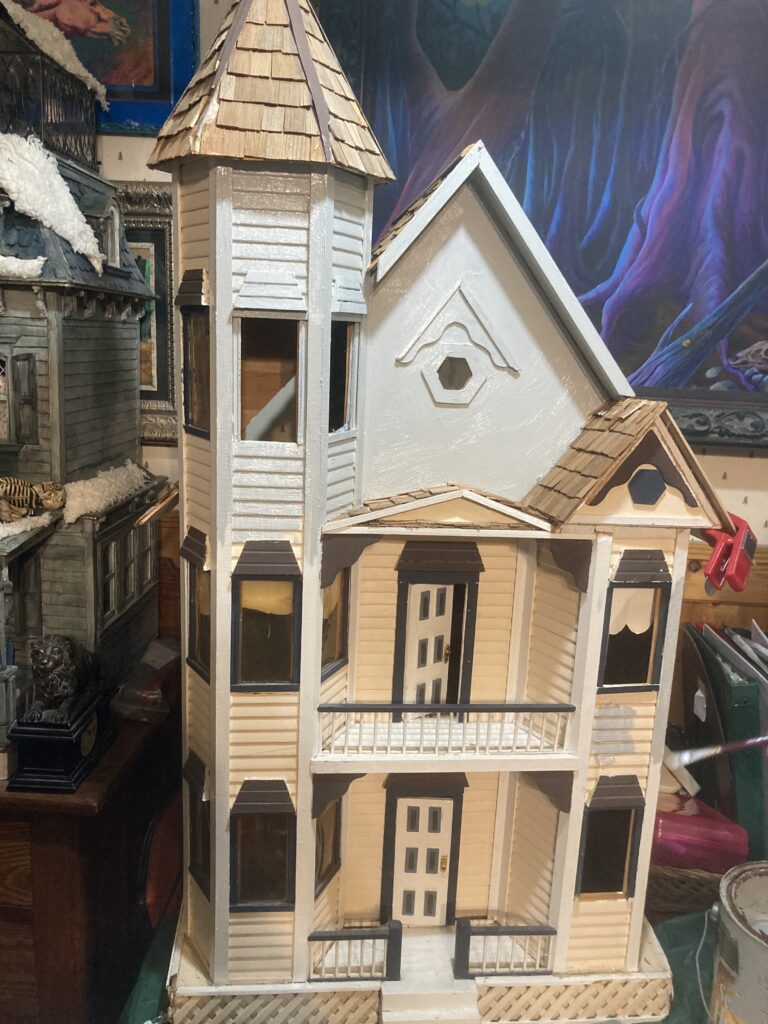
First thing, I had to make a few structural repairs to the outside. I was lucky in that a lot of the missing pieces of this house were in a ziplock bag that came with it. I also had to take off and reattach a few pieces that weren’t put on correctly by a previous owner. After these initial repairs were done, we started painting.
I started with a base coat of light gray exterior paint that I had left over from previous projects. We worked it into all of the nooks and crannies of the siding, on all of the railings, and pretty much anywhere that we wanted to look aged.

After the gray coat is on, I let the paint dry thoroughly before moving on to the next step.
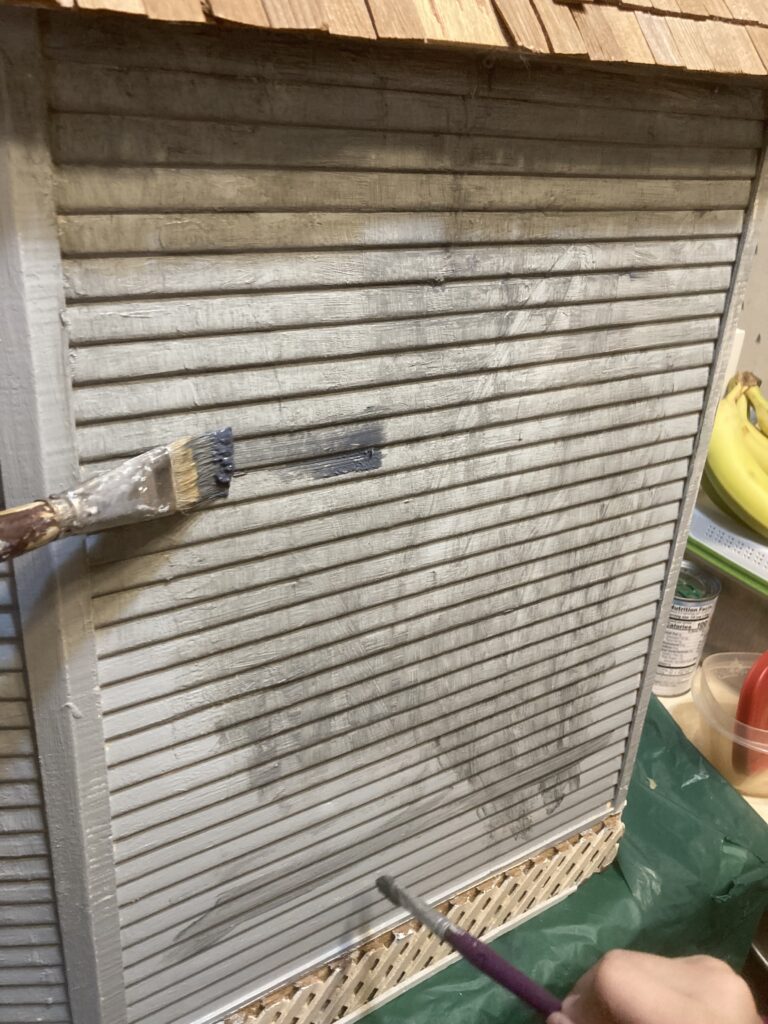
For the next step, I found it easier to use two brushes. I used one brush to apply a small amount of a dark gray paint. I wet the second brush with water (but not sopping wet), and then brushed it over the wet dark paint. My wet brush had stiff, coarse bristles that I used to scrub the ‘dirt’ into the crevices of the siding. I scrubbed the pigment up and down, back and forth, and all around until I was satisfied with its grungy appearance.
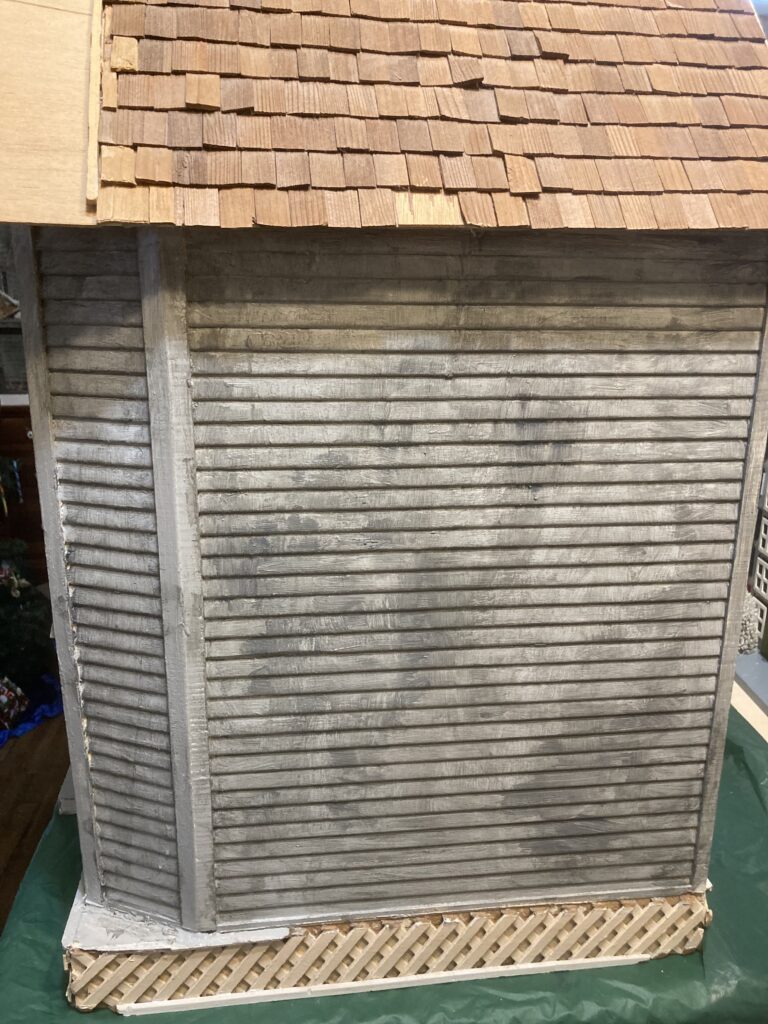
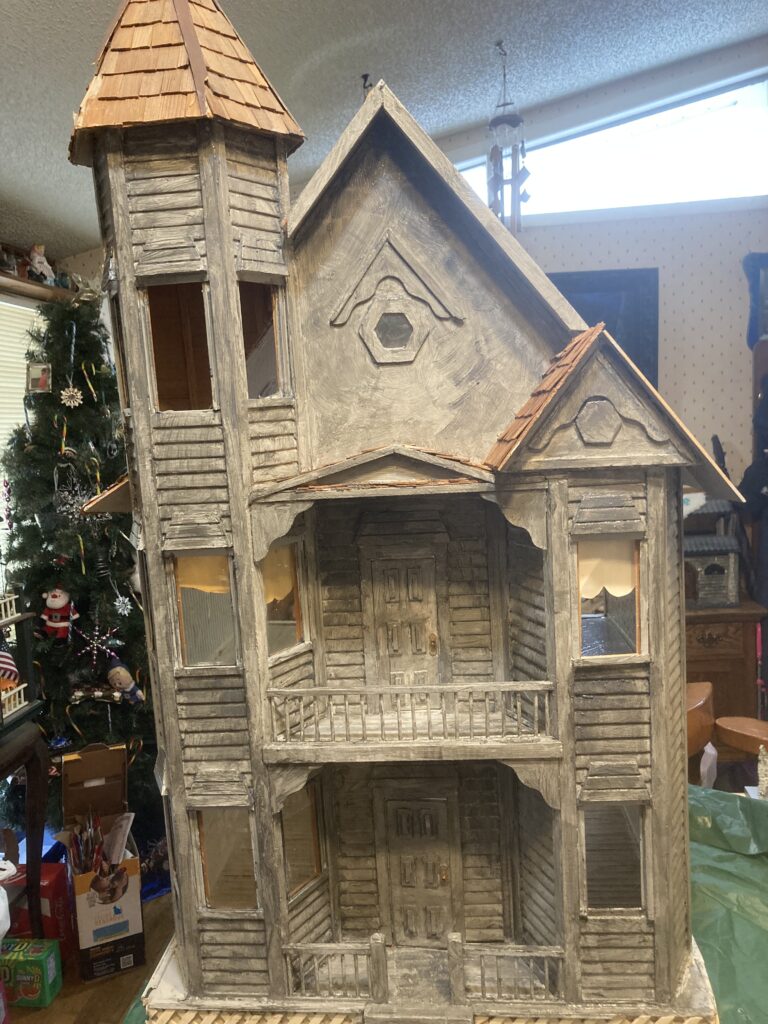
After the dark gray looked satisfactory, I moved on to the next color. I wanted more contrast, so I added JUST A BIT of black. Black is a very overpowering color and I did not want to overdo it. I applied it in just a few areas, particularly the porch rails, the trim above the windows, and a little on the porch floor where I felt there might be more dirt and rot accumulated.
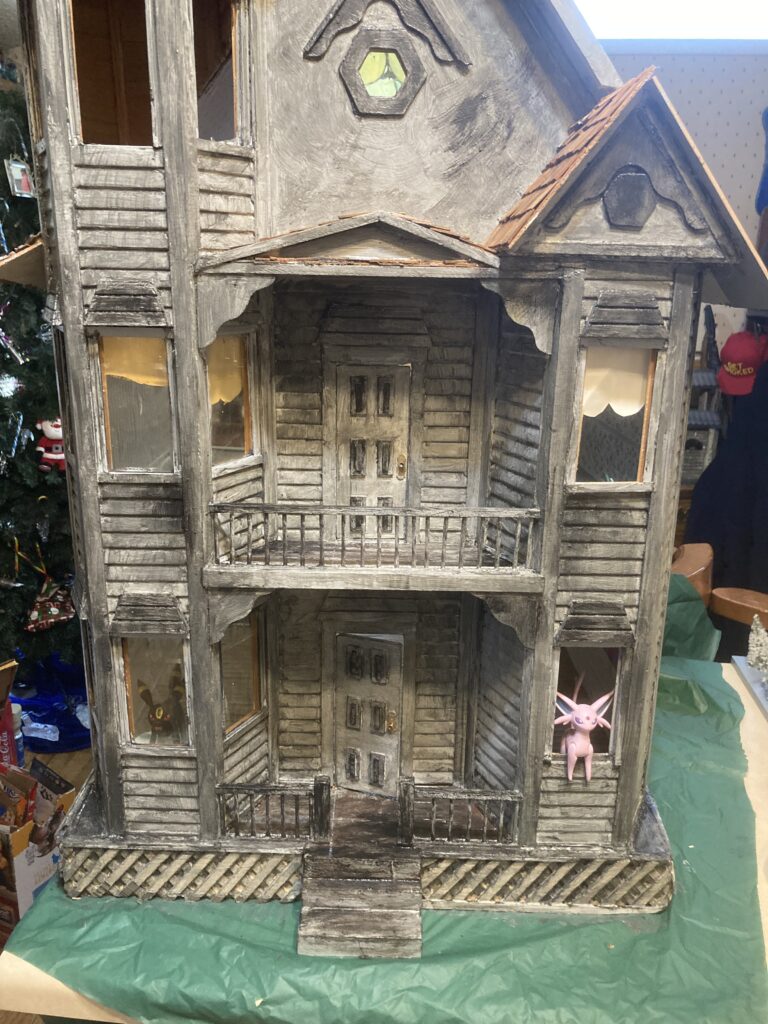
After black, I wanted a little green as wood can get a thin film of mold on it over time. I kept the green paint watered down a LOT because it didn’t want it very strong. Just a very thin hint of it is enough.


Feeling fairly satisfied with the paint, I moved on to the shingles. As they were, they looked way too new for an abandoned building, so I needed to age them somehow. Luckily, I have this handy-dandy Aged Wood Accelerator from Varathane. This was purchased in the wood stain department at Menards. So far this product has come in handy for several of my dollhouse projects.

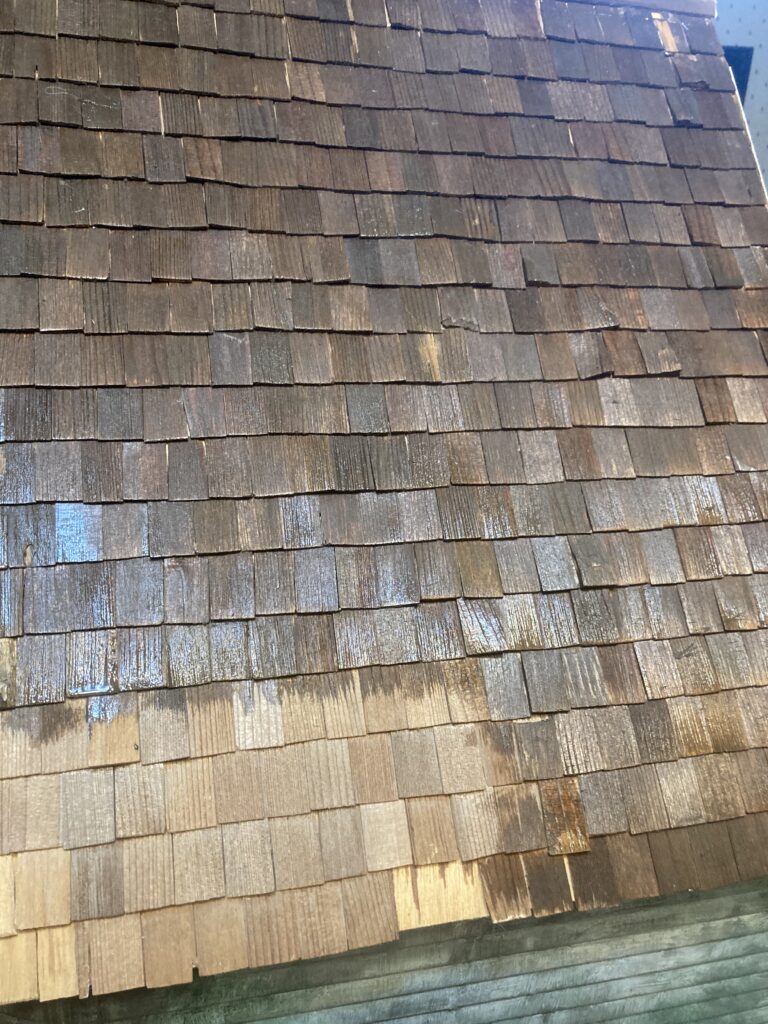

We were both pretty pleased with how this project turned out. Eventually we might move on to the interior, but for now it is a blank slate for my child to decorate as she pleases. Let me know if you have any questions or comments!

